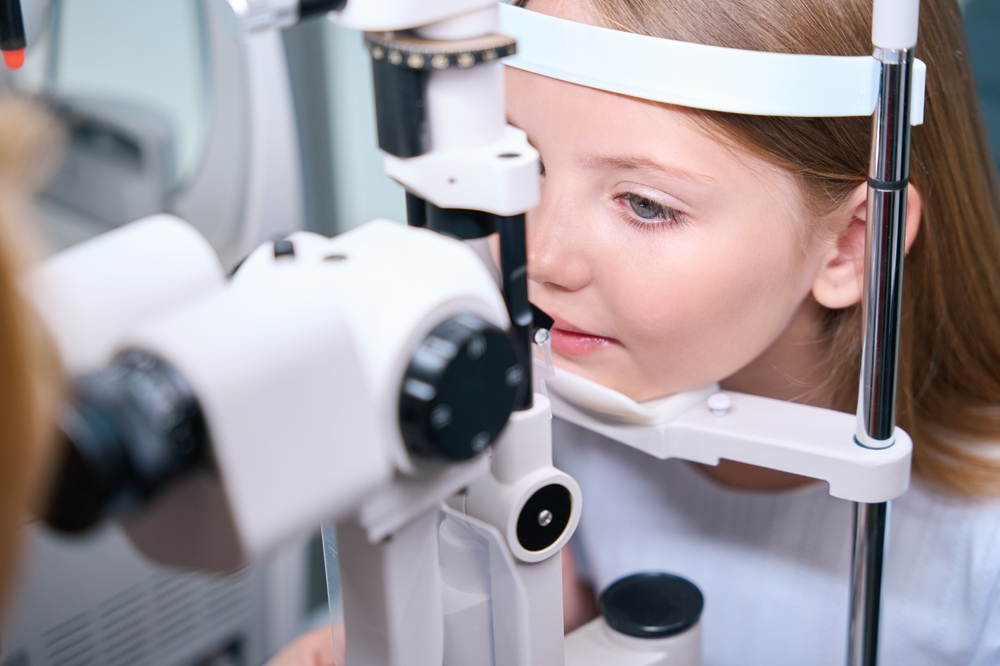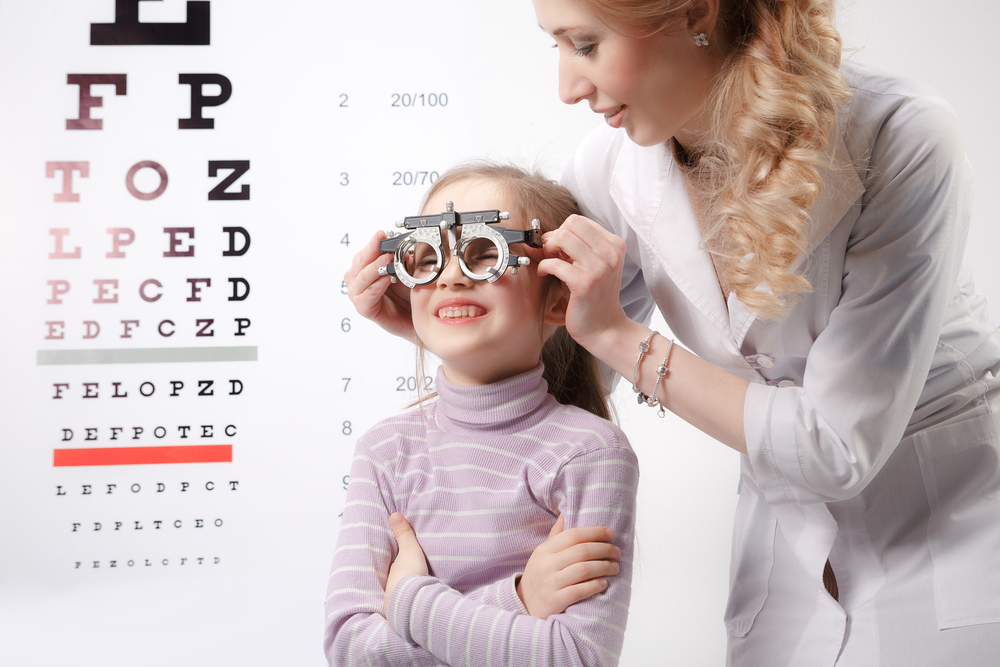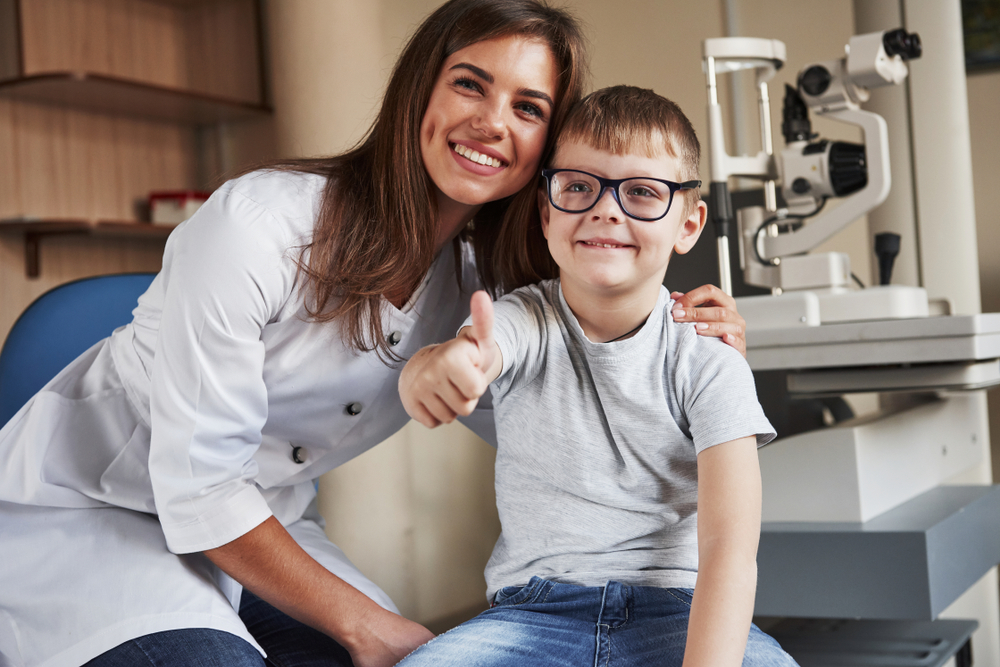As a parent, you want to support all aspects of your children’s health, including the health of their eyes. Most vision issues in kids can be successfully treated if identified early on through comprehensive eye exams.
Knowing when you should start taking your child to routine eye care appointments and how often to have their eyes thoroughly checked is key to safeguarding their visual development. Keep reading to learn how often you should take your kids to the eye doctor!
When Should I Start Taking My Kid to the Eye Doctor?
 Ideally, children should visit an eye doctor for the first time before they even start school. The American Optometric Association advises that babies should have their first complete eye assessment between six months and one year old.
Ideally, children should visit an eye doctor for the first time before they even start school. The American Optometric Association advises that babies should have their first complete eye assessment between six months and one year old.
This allows detection of vision issues extremely early when treatment is most effective. Then, pre-school eye exams every one to two years are suggested up until around age five to six.
Even if no particular risk factors exist, having your child’s vision screened at annual well-child visits beginning around age three is smart. Pediatricians and family doctors test for basic vision abilities starting at these appointments.
If your child’s doctor observes any potential issues on vision screening or you notice possible symptoms, they can then refer you to a pediatric optometrist for a more comprehensive evaluation.
Do Infants Need to Go to the Eye Doctor?
What about newborn vision exams? In most cases, there is no need to take perfectly healthy infants without risk factors to a separate eye-only appointment.
However, all babies should have their eyes carefully inspected soon after birth by the pediatrician or hospital staff. This first newborn eye check screens for early eye disorders and ensures the eyes appear anatomically normal and that vision seems to be developing typically so far.
If this early inspection spots any concerns, then a prompt, thorough infant eye exam by an optometrist would be scheduled.
How Frequently Do Kids Need Eye Exams?
 Kids’ eyes can change rapidly, and vision correction needs may increase frequently in early childhood. This makes the re-evaluating focus, tracking skills, eye coordination, prescription, and eye health yearly essential.
Kids’ eyes can change rapidly, and vision correction needs may increase frequently in early childhood. This makes the re-evaluating focus, tracking skills, eye coordination, prescription, and eye health yearly essential.
School-age children still require exams every couple of years, whether they wear glasses or contacts since subtle vision changes can easily be missed and impact learning. Children already under care for conditions like amblyopia also need personalized ongoing eye care plans tailored by their eye doctor.
If you are wondering about the appropriate frequency for your child’s eye exams, it’s best to ask their eye doctor.
What Happens During a Pediatric Eye Exam?
You may wonder how an eye doctor’s appointment for a toddler or school-age kid compares to your own. Pediatric eye exams combine a series of painless, and sometimes fun, tests of eyesight abilities.
Your child’s eye doctor will also thoroughly examine your child’s eyes to inspect eye health. During a pediatric eye exam, your child’s eye doctor evaluates:
Clarity of vision
One of the most fundamental parts of an eye exam for a child is testing their clarity of vision at various distances. The eye doctor will assess how clearly your child can see things both up close and far away.
For younger children who cannot yet read traditional eye charts with letters, the doctor may use picture-based vision tests. These involve looking at an image like a cat or a house and indicating which direction it is facing or identifying other basic aspects of the picture.
As children get older and start recognizing letters, the doctor will transition to using standard eye charts. Tracking visual clarity at both near and far, with age-appropriate tools, provides meaningful insight into the health and functioning of growing young eyes.
Eye Coordination
Testing eye coordination is another vital part of a pediatric eye exam. The eye doctor will assess how well your child’s eyes work together to track objects as they move across the room.
To test eye coordination abilities, the eye doctor may have your child follow a toy or object like a penlight as the doctor moves it from side to side, up and down, and in diagonals and circular patterns. They will observe your child’s eye movements to evaluate how accurately and smoothly the eyes can stay aligned on the moving object.
Assessing eye coordination skills provides insight into whether both eyes and muscles are functioning in unison. Catching such issues early on with tracking exercises ensures they do not progress into more significant long-term problems that could impact vision, reading abilities, and sometimes even sports performance.

Inward or Outward Eye Misalignment
In addition to checking eye coordination, doctors also look for signs of visual alignment issues, like inward (crossed eyes) or outward misalignment. To test for these conditions, known as strabismus, the doctor may cover one eye at a time while your child is looking at an object.
This allows the eye doctor to observe whether one eye ever loses focus or begins to wander inward toward the nose, outward toward the ears, upward or downward while the other eye stays fixed straight ahead on target. Catching these subtle alignment differences is important for preventing long-term vision loss in one eye or other complications.
Prescription Needs
Another main component of any eye exam is assessing a child’s need for corrective lenses or glasses. The eye doctor will evaluate refractive errors like nearsightedness, farsightedness, and astigmatism that could indicate the need for prescription glasses or contacts.
Detecting nearsightedness and farsightedness issues early when a child’s vision is still developing allows steps to improve sight and prevent worsening over time. Evaluating and promptly addressing any existing or emerging refractive errors ensures your child’s world stays in clear crisp focus.
Like any eye exam, at the end, your child’s eye doctor will explain their findings and recommend treatment options for any vision disorders uncovered. Scheduling eye exams for your kids every one to two years lets eye doctors fully evaluate if vision is on track while identifying subtle problems early when they are most treatable.
Following these pediatric vision screening guidelines helps ensure your child sees clearly for learning, play, and lifelong eye health.
Is it time for your kid to have an eye exam? Schedule an appointment at Blaine Eye Clinic in Blaine, MN, today!





